Reg-1α Promotes Differentiation of Cortical Progenitors via Its N-Terminal Active Domain
- PMID: 32903776
- PMCID: PMC7443566
- DOI: 10.3389/fcell.2020.00681
Reg-1α Promotes Differentiation of Cortical Progenitors via Its N-Terminal Active Domain
Abstract
Reg-1α belongs to the Reg family of small, secreted proteins expressed in both pancreas and nervous system. Reg-1α is composed of two domains, an insoluble C-type lectin domain and a short soluble N-terminal peptide, which is released from the molecule upon proteolytic N-terminal processing, although the biological significance of this proteolysis remains unclear. We have previously shown that binding of Reg-1α to its receptor Extl3 stimulates axonal outgrowth. Reg-1α and Extl3 genes are expressed in the developing cortex but their expression decreases in adulthood, pointing to a possible function of this signaling system at the early developmental stages. Here, we demonstrate that recombinant Reg-1α increases migration and differentiation of cultured embryonic rat telencephalic progenitors via the activation of GSK-3β activity. In vivo overexpression of Reg-1α by in utero electroporation, has a similar effect, favoring premature differentiation of cortical progenitors. Notably, the N-terminal soluble domain, but not the C-type lectin domain, is largely responsible for Reg-1α effects on cortical neuronal differentiation. We thus conclude that Reg-1α via its proteolytically generated N-terminal domain is required for basic development processes.
Keywords: Extl3; GSK-3β; Reg-1α; axon elongation; differentiation; neural progenitors.
Copyright © 2020 Varilh, Acquatella-Tran Van Ba, Silhol, Nieto-Lopez, Moussaed, Lebart, Bovolenta, Verdier, Rossel, Marcilhac and Trousse.
Figures

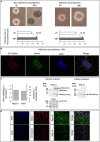
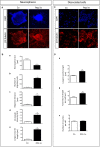
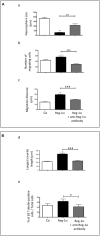

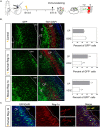
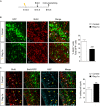
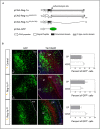

Similar articles
-
Regenerating islet-derived 1α (Reg-1α) protein is new neuronal secreted factor that stimulates neurite outgrowth via exostosin Tumor-like 3 (EXTL3) receptor.J Biol Chem. 2012 Feb 10;287(7):4726-39. doi: 10.1074/jbc.M111.260349. Epub 2011 Dec 9. J Biol Chem. 2012. PMID: 22158612 Free PMC article.
-
Regenerating islet-derived 1α (REG-1α) protein increases tau phosphorylation in cell and animal models of tauopathies.Neurobiol Dis. 2018 Nov;119:136-148. doi: 10.1016/j.nbd.2018.07.029. Epub 2018 Aug 6. Neurobiol Dis. 2018. PMID: 30092268
-
Specific functions of Exostosin-like 3 (EXTL3) gene products.Cell Mol Biol Lett. 2020 Aug 20;25:39. doi: 10.1186/s11658-020-00231-y. eCollection 2020. Cell Mol Biol Lett. 2020. PMID: 32843889 Free PMC article. Review.
-
Alpha1,4-N-acetylglucosaminyltransferase encoding gene EXTL3 expression pattern in mouse adult and developing tissues with special attention to the pancreas.Anat Embryol (Berl). 2003 Dec;207(4-5):333-41. doi: 10.1007/s00429-003-0348-z. Epub 2003 Nov 15. Anat Embryol (Berl). 2003. PMID: 14618397
-
Reg protein: a potential beta-cell-specific growth factor?Diabetes Metab. 1996 Jul;22(4):229-34. Diabetes Metab. 1996. PMID: 8767167 Review.
Cited by
-
Reg-1α, a New Substrate of Calpain-2 Depending on Its Glycosylation Status.Int J Mol Sci. 2022 Aug 2;23(15):8591. doi: 10.3390/ijms23158591. Int J Mol Sci. 2022. PMID: 35955718 Free PMC article.
-
Controversial Roles of Regenerating Family Proteins in Tissue Repair and Tumor Development.Biomedicines. 2024 Dec 26;13(1):24. doi: 10.3390/biomedicines13010024. Biomedicines. 2024. PMID: 39857608 Free PMC article. Review.
References
-
- Acquatella-Tran Van Ba I., Marchal S., François F., Silhol M., Lleres C., Michel B., et al. (2012). Regenerating islet-derived 1α (Reg-1α) protein is new neuronal secreted factor that stimulates neurite outgrowth via exostosin Tumor-like 3 (EXTL3) receptor. J. Biol. Chem. 287 4726–4739. 10.1074/jbc.m111.260349 - DOI - PMC - PubMed
-
- Cerini C., Peyrot V., Garnier C., Duplan L., Veesler S., Caer J.-P. L., et al. (1999). Biophysical characterization of lithostathine evidences for A polymeric structure at physiological Ph and A proteolysis mechanism leading to the formation of fibrils. J. Biol. Chem. 274 22266–22274. 10.1074/jbc.274.32.22266 - DOI - PubMed

